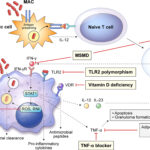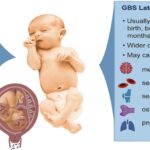Nausea and vomiting are protective reflexes triggered by the central nervous system in response to a wide variety of stimuli, including gastrointestinal irritation, vestibular dysfunction, toxins, medications, and psychological stress. The brainstem houses the vomiting center, which receives input from the chemoreceptor trigger zone (CTZ), vestibular system, and vagal afferents from the gastrointestinal tract.
These symptoms may be acute or chronic and arise in various clinical settings, such as:
- Motion sickness
- Pregnancy (morning sickness)
- Postoperative states
- Chemotherapy or radiation therapy
- Infections
- Gastroparesis or functional GI disorders

Key Categories of Prevention Approaches
Preventive strategies can be categorized based on the underlying etiology and patient context. A multifaceted approach offers the best outcomes.
Dietary and Lifestyle Measures for Nausea Prevention
Small, Frequent Meals with Low-Fat Content
We recommend consuming small, easily digestible meals throughout the day to prevent stomach overload and promote gastric emptying. Ideal dietary strategies include:
- Bland, low-fat foods such as toast, crackers, rice, and applesauce
- Avoiding fried, greasy, or spicy items
- Consuming cold or room-temperature meals, as hot foods may intensify nausea
Adequate Hydration and Electrolyte Balance
Maintaining hydration with clear fluids—such as water, oral rehydration solutions, or ginger tea—prevents dehydration and mitigates nausea caused by fluid imbalances.
Avoiding Known Dietary Triggers
Common triggers include:
- Alcohol
- Caffeine
- Strong odors (e.g., fish, garlic)
- Carbonated beverages
Patients should be advised to keep a food diary to identify and eliminate individual sensitivities.
Pharmacologic Interventions: Targeted Anti-Nausea Medications
1. Antihistamines (e.g., meclizine, diphenhydramine)
Primarily effective for motion sickness and vestibular disorders, antihistamines block histaminergic pathways involved in the emetic reflex.
2. Anticholinergics (e.g., scopolamine patch)
Used prophylactically, especially in travel-related nausea, scopolamine offers effective transdermal protection against motion-induced vomiting.
3. Dopamine Antagonists (e.g., metoclopramide, prochlorperazine)
These agents are effective for gastroparesis, chemotherapy-induced nausea, and general acute nausea.
4. 5-HT3 Antagonists (e.g., ondansetron, granisetron)
Particularly beneficial for postoperative and chemotherapy-induced nausea, these medications block serotonin receptors in the CTZ and gastrointestinal tract.
5. NK1 Receptor Antagonists (e.g., aprepitant)
Utilized in moderate to high emetogenic chemotherapy, these drugs complement other antiemetic regimens.
Prevention in Specific Clinical Contexts
Chemotherapy-Induced Nausea and Vomiting (CINV)
CINV is divided into acute, delayed, anticipatory, breakthrough, and refractory phases. Prevention strategies include:
- Pre-treatment antiemetic regimen combining a 5-HT3 antagonist, corticosteroid, and NK1 receptor antagonist
- Use of olanzapine in highly emetogenic regimens
- Behavioral therapies for anticipatory nausea
Pregnancy-Related Nausea (Morning Sickness)
- First-line: Vitamin B6 (pyridoxine) with or without doxylamine
- Second-line: Metoclopramide, ondansetron
- Non-pharmacologic measures: acupressure wristbands, ginger supplements
Postoperative Nausea and Vomiting (PONV)
Risk factors include general anesthesia use, opioid analgesia, female sex, and history of motion sickness. Prophylactic approaches:
- Multimodal antiemetic therapy before surgery
- Avoidance of emetogenic anesthetics
- Regional anesthesia when feasible
Behavioral and Complementary Techniques
Acupressure and Acupuncture
Stimulation of P6 (Neiguan) point on the wrist has shown effectiveness in preventing both motion sickness and postoperative nausea.
Cognitive Behavioral Therapy (CBT)
CBT is especially useful for anticipatory nausea in patients undergoing repeated chemotherapy sessions. It focuses on coping strategies and desensitization.
Aromatherapy
Inhalation of peppermint or lemon essential oils can reduce perception of nausea in certain individuals.
Environmental Modifications to Reduce Triggers
- Ventilation: Fresh air or fans reduce odors that may induce nausea
- Motion Control: In vehicles, sitting in the front seat and focusing on the horizon minimizes vestibular stimulation
- Visual Stimuli Reduction: Avoid reading or screen exposure during movement
Preventive Measures for Pediatric and Geriatric Populations
Pediatric Considerations
- Use weight-based antiemetic dosing
- Monitor for dehydration signs
- Favor oral rehydration therapy before escalating to pharmacologic interventions
Geriatric Considerations
- Assess for polypharmacy interactions
- Adjust dosages based on renal and hepatic function
- Prioritize non-pharmacologic methods where possible
Monitoring and Escalation of Care
Persistent nausea or vomiting warrants investigation to rule out serious underlying conditions, such as:
- Gastrointestinal obstruction
- Central nervous system disorders
- Metabolic abnormalities (e.g., uremia, hypercalcemia)
Early intervention improves prognosis and minimizes complications such as electrolyte imbalance, weight loss, or aspiration pneumonia.
Summary Table: Preventive Strategies by Etiology
| Cause | Preventive Measures |
|---|---|
| Motion Sickness | Scopolamine, meclizine, front-seat travel, avoid reading |
| Pregnancy | Vitamin B6, ginger, doxylamine, frequent small meals |
| Chemotherapy | 5-HT3 antagonist, dexamethasone, NK1 antagonist, olanzapine |
| Postoperative | Prophylactic antiemetics, anesthesia choice, minimal opioid use |
| Gastroparesis | Metoclopramide, erythromycin, dietary fiber reduction |
| Vestibular Disorders | Antihistamines, vestibular rehabilitation exercises |
The prevention of nausea and vomiting demands a personalized, evidence-based approach integrating dietary, pharmacologic, behavioral, and environmental strategies. By identifying triggers and applying targeted interventions, we can significantly enhance patient comfort and quality of life across diverse clinical scenarios.

